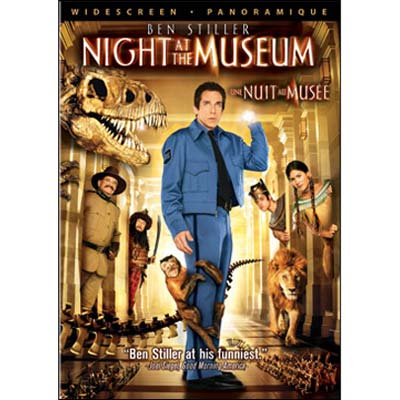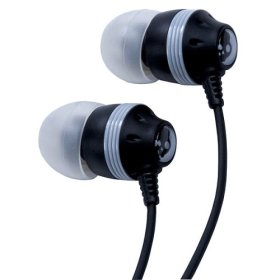I’ve got a pretty bad DVD habit, which is pretty evident if you check out my collection hosted on MMDB. When I first got started, I’d pick up at least one new title a week. My purchase rate has slowed down, but I tend to binge.
The previously viewed movies at Rogers is a terrible temptation. Recently I picked up Casino Royale in a 2 for $10 deal. Unfortunately with dirt cheap prices, I also end up buying movies that I probably should have just rented. The other movie I bought paired with Casino Royale was Night at the Museum, of course I selected a box that was the widescreen version – yet upon opening it at home I discovered the full screen copy (sigh). So, back to Rogers for a refund as they had no copies for exchange.
 Tonight, a bit at loose ends, I figured I’d visit the local Rogers video store and browse the previously viewed section. I had almost made it though the entire section of 2 for $15 when I came across a copy of Night at the Museum. Now it so happened that this was a different Rogers to the one that I had previously bought a mis-boxed full screen version. I figured my odds were pretty good on finding an actual widescreen version this time (at least, that’s what the box said).
Tonight, a bit at loose ends, I figured I’d visit the local Rogers video store and browse the previously viewed section. I had almost made it though the entire section of 2 for $15 when I came across a copy of Night at the Museum. Now it so happened that this was a different Rogers to the one that I had previously bought a mis-boxed full screen version. I figured my odds were pretty good on finding an actual widescreen version this time (at least, that’s what the box said).
It is starting to seem like I’m doomed to either watch the full screen version, or not see this movie. Yup, I managed to buy another copy of the movie that was mis-boxed.
At home I figured that I’d check out IMDB viewer ratings on this movie to see if I should even bother to try to find a widescreen copy. Almost beyond belief, it seems that imdb.com is down tonight?
To top it off, today I had picked up an external USB enclosure to stick a 60gig IDE drive I’ve got sitting on my desk into. As you can guess at this point, it seems I managed to get one that is DOA. So it will be off to exchange that sometime next week. When I do get it working, I plan to pair it up with my slug and possibly use it to run a RESTORE backup server.
Summary: 2nd failure to purchase a widescreen version; Unable to check IMDB ratings as the site is inexplicably down; DOA hardware purchase. Just not my day.


